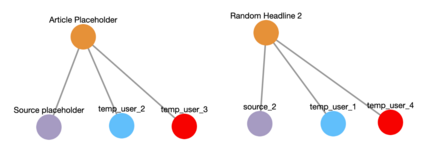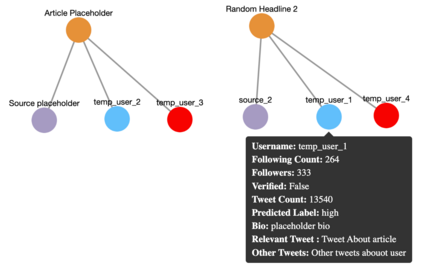The rise of social media has enabled the widespread propagation of fake news, text that is published with an intent to spread misinformation and sway beliefs. Rapidly detecting fake news, especially as new events arise, is important to prevent misinformation. While prior works have tackled this problem using supervised learning systems, automatedly modeling the complexities of the social media landscape that enables the spread of fake news is challenging. On the contrary, having humans fact check all news is not scalable. Thus, in this paper, we propose to approach this problem interactively, where humans can interact to help an automated system learn a better social media representation quality. On real world events, our experiments show performance improvements in detecting factuality of news sources, even after few human interactions.
翻译:暂无翻译









